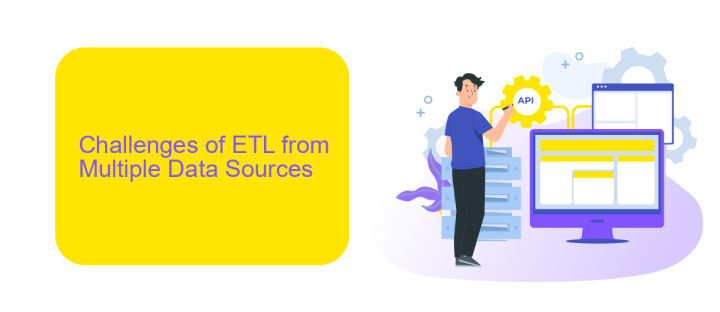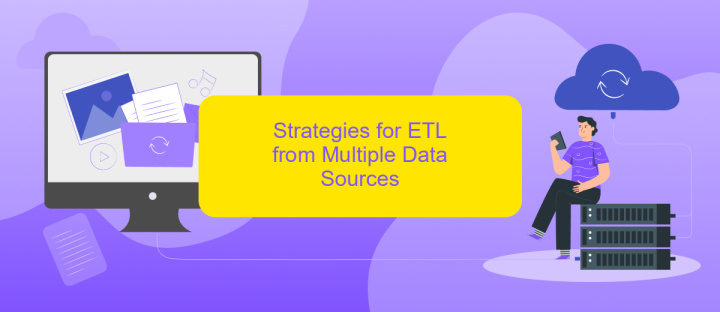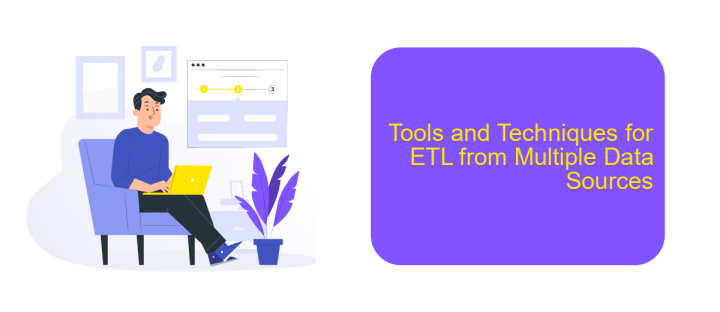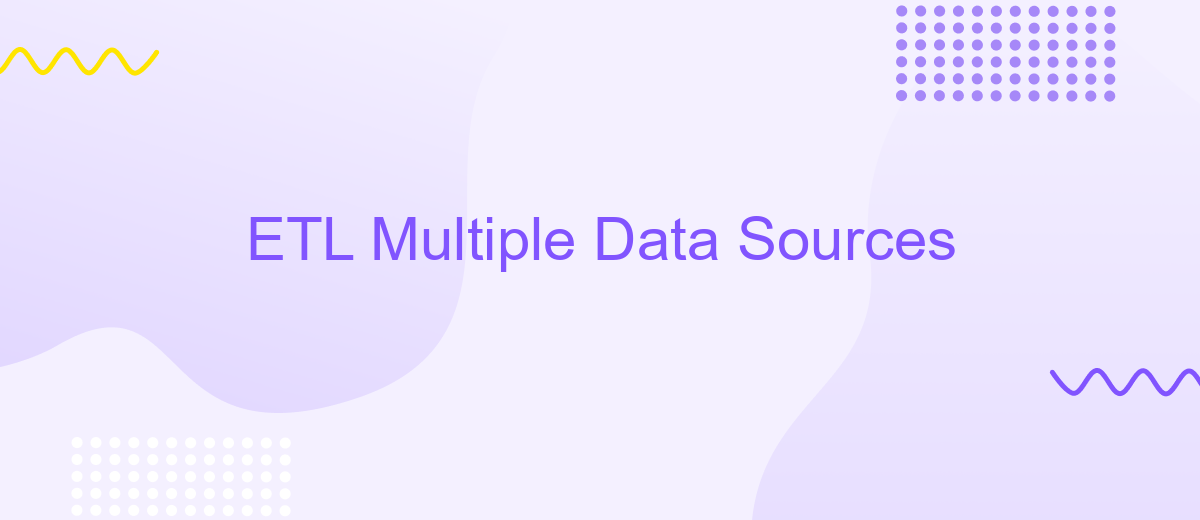ETL Multiple Data Sources
Extract, Transform, Load (ETL) processes are crucial for managing data from multiple sources. In today's data-driven world, businesses often rely on diverse data streams to gain insights and make informed decisions. This article explores the challenges and best practices for efficiently integrating and transforming data from various origins to ensure accuracy, consistency, and accessibility in your data warehouse.
Introduction to ETL and Multiple Data Sources
ETL, which stands for Extract, Transform, Load, is a crucial process in data management that involves extracting data from multiple sources, transforming it into a suitable format, and loading it into a target database or data warehouse. This process ensures that data is consistent, accurate, and ready for analysis.
- Extract: Data is collected from various sources, such as databases, APIs, and flat files.
- Transform: The extracted data is cleaned, enriched, and converted into a suitable format.
- Load: The transformed data is loaded into a target system, such as a data warehouse.
Managing multiple data sources can be challenging, but tools like ApiX-Drive simplify the integration process. ApiX-Drive allows users to connect various applications and automate data workflows without any coding knowledge. This service helps streamline the ETL process, ensuring seamless data integration from diverse sources, ultimately enhancing data accessibility and reliability for business intelligence and analytics.
Challenges of ETL from Multiple Data Sources

One of the primary challenges of ETL from multiple data sources is data inconsistency. Different sources often have varying data formats, structures, and quality, which can complicate the extraction and transformation processes. Ensuring that data is harmonized and standardized before loading it into the target system requires sophisticated data mapping and transformation logic. This can be both time-consuming and resource-intensive, necessitating robust validation mechanisms to maintain data integrity.
Another significant challenge is the integration of disparate systems. Each data source may have its own access protocols, security measures, and connectivity requirements, making seamless integration complex. Utilizing integration services like ApiX-Drive can streamline this process by offering pre-built connectors and automated workflows, which simplify the integration of multiple data sources. However, even with such tools, ongoing maintenance and monitoring are essential to address any issues that arise due to changes in source systems or data structures.
Strategies for ETL from Multiple Data Sources

When dealing with ETL from multiple data sources, it is crucial to establish a clear strategy to ensure data consistency, accuracy, and efficiency. The complexity increases with the number of sources, making it essential to follow a structured approach.
- Data Mapping: Identify and map the data fields from each source to ensure compatibility and consistency.
- Data Transformation: Apply necessary transformations to standardize data formats and values.
- Integration Tools: Utilize tools like ApiX-Drive to automate and streamline the integration process, reducing manual effort and errors.
- Data Validation: Implement validation checks to ensure data quality and integrity before loading into the target system.
- Monitoring and Maintenance: Continuously monitor the ETL process and perform regular maintenance to address any issues promptly.
By following these strategies, organizations can effectively manage ETL processes involving multiple data sources. Tools like ApiX-Drive can significantly enhance the efficiency and reliability of data integration, allowing businesses to focus on deriving insights and making data-driven decisions.
Tools and Techniques for ETL from Multiple Data Sources

Extract, Transform, Load (ETL) processes from multiple data sources require specialized tools and techniques to ensure data integrity and efficient workflow. These tools help in automating the extraction of data, transforming it into a usable format, and loading it into a target system. Effective ETL tools streamline the integration of various data sources, making it easier to manage and analyze large volumes of data.
One of the key challenges in ETL from multiple data sources is handling the heterogeneity and complexity of data formats. This is where tools like ApiX-Drive come into play. ApiX-Drive provides a user-friendly interface and robust features to connect different data sources seamlessly. It supports a wide range of integrations, making it an ideal choice for businesses looking to automate their data workflows without extensive coding.
- Data Extraction: Tools like Apache Nifi and Talend can automate data extraction from various sources.
- Data Transformation: Platforms such as Apache Spark and Informatica help in transforming data into the required format.
- Data Loading: Solutions like Amazon Redshift and Google BigQuery facilitate efficient data loading into target systems.
- Integration Services: ApiX-Drive offers extensive integration capabilities to connect different data sources effortlessly.
Choosing the right tools and techniques for ETL from multiple data sources is crucial for maintaining data quality and achieving operational efficiency. By leveraging advanced ETL tools and integration services like ApiX-Drive, businesses can ensure smooth data flow and gain valuable insights from their data assets.
Best Practices for ETL from Multiple Data Sources
When executing ETL processes from multiple data sources, it is crucial to ensure data consistency and integrity. Begin by standardizing data formats and structures across all sources to facilitate seamless integration. Implement robust data validation rules to detect and rectify any inconsistencies early in the process. Additionally, employ incremental data loading techniques to minimize system load and ensure timely updates without overwhelming your infrastructure.
Leveraging integration services such as ApiX-Drive can significantly streamline the ETL process. ApiX-Drive allows for the automated transfer and synchronization of data between various platforms, reducing manual intervention and the risk of errors. By utilizing such tools, you can set up scheduled data extractions and transformations, ensuring that your data pipeline remains efficient and reliable. Always monitor and optimize your ETL workflows to adapt to evolving data requirements and maintain optimal performance.
FAQ
What is ETL and why is it important for multiple data sources?
How do you handle data quality issues in ETL processes involving multiple data sources?
What are the challenges of integrating multiple data sources in ETL?
How can automation tools like ApiX-Drive help in managing ETL processes for multiple data sources?
What are the best practices for designing an ETL process for multiple data sources?
Time is the most valuable resource for business today. Almost half of it is wasted on routine tasks. Your employees are constantly forced to perform monotonous tasks that are difficult to classify as important and specialized. You can leave everything as it is by hiring additional employees, or you can automate most of the business processes using the ApiX-Drive online connector to get rid of unnecessary time and money expenses once and for all. The choice is yours!

